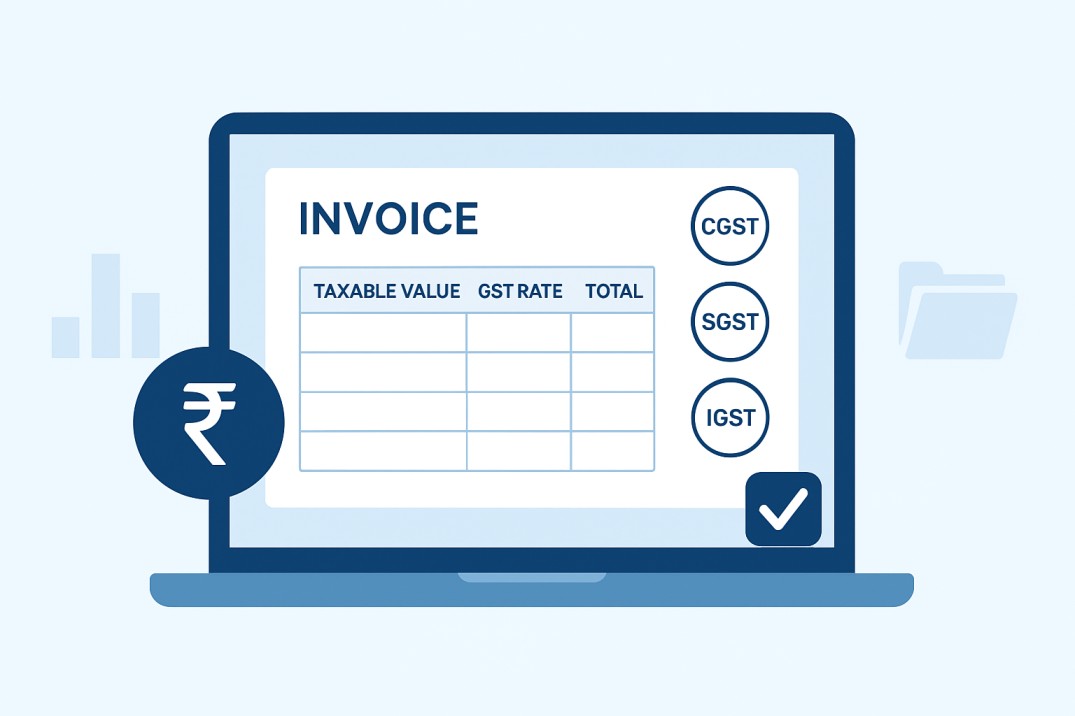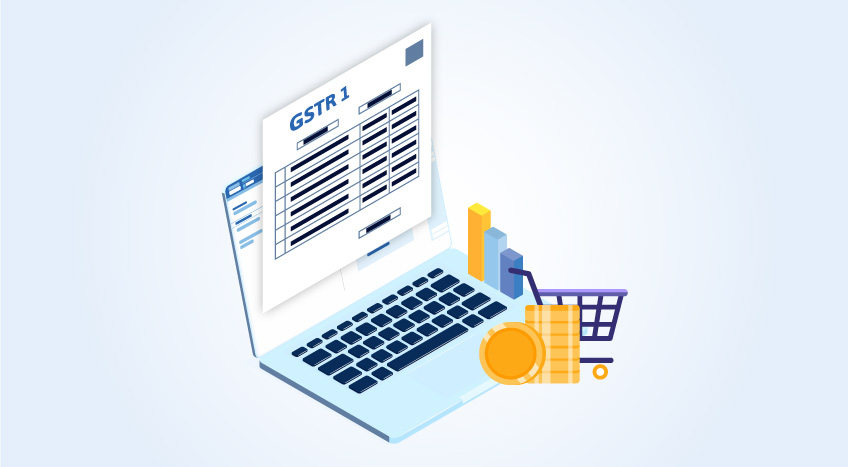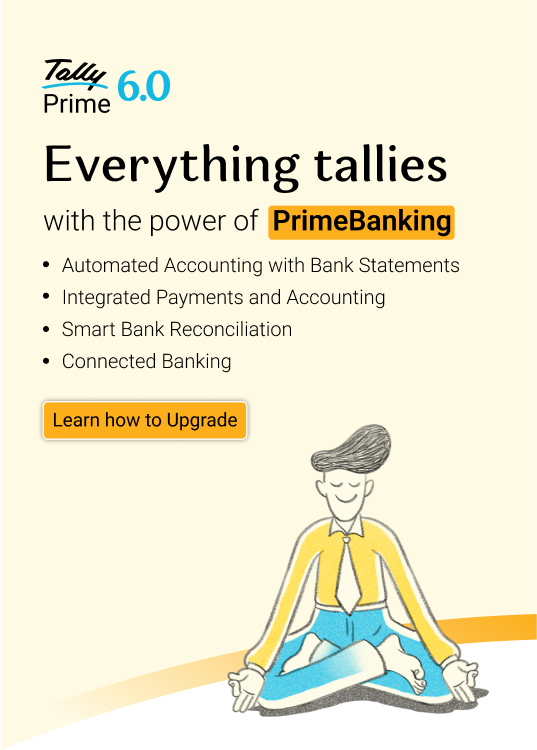Preparing accurate and reliable financial statements is a necessity for Non-Corporate Entities (NCEs) such as proprietorships, partnerships, and trusts. The Institute of Chartered Accountants of India (ICAI) has issued new guidance to standardise financial reporting for NCEs, bringing Indian MSMEs in line with global best practices.
This guide explains each step to creating financial statements as per the latest ICAI guidance, ensuring your business stands out to lenders, investors, and regulators.
Creating financial statements per ICAI guidance for NCEs
ICAI’s Guidance Note applies to all non-corporate entities, except companies and LLPs, from the financial year 2024–25. It aims to achieve consistency, clarity, and comparability in financial statements by requiring all NCEs to adopt a standardised structure and set of disclosures.
Here are the steps used to create the financial statements per ICAI guidance for NCEs:
Step 1: Determine your entity classification
Your classification determines the extent of disclosures and accounting standards applicable to your business. Most MSMEs typically fall under Levels III or IV, which offer certain relaxations compared to larger entities. The ICAI guidance classifies NCEs into four levels based on turnover and borrowings:
- Level I entities: Annual turnover exceeding ₹250 crores or borrowings exceeding ₹50 crores
- Level II entities: Annual turnover between ₹50-250 crores or borrowings between ₹10-50 crores
- Level III entities: Annual turnover between ₹10-50 crores or borrowings up to ₹10 crores
- Level IV entities: Annual turnover up to ₹10 crores and zero borrowings
Step 2: Match your books – The importance of debit and credit
The first step is to ensure all business transactions are correctly recorded with each debit matched by a corresponding credit. Double-entry bookkeeping is the backbone of reliable accounts. When your books are balanced (debits equal credits), you can be confident about the reliability of your data.
- Every expense or asset addition must have a matching reduction in cash or increase in liability.
- Ensure all entries are supported by invoices, receipts, or contracts.
- Regularly reconcile accounts with bank statements and cash books.
Step 3: Use the right structure – Components of financial statements
ICAI specifies a clear format for financial statements to enhance comparability and transparency:
Balance Sheet
A balance sheet is a financial statement that shows a company’s assets, liabilities, and equity at a specific point in time, offering a snapshot of its financial health.
- Divide the report into two clear sections: ‘Equity and Liabilities’ and ‘Assets’.
- Classify items as ‘current’ or ‘non-current’ based on their expected usage or settlement period.
- Place owners’ funds, loan liabilities, trade payables, and provisions under liabilities.
- Show fixed assets, inventory, receivables, cash and other current assets under assets.
Statement of Profit and Loss
The Statement of Profit and Loss, also known as the income statement, summarises a company’s revenues, expenses, and profits over a specific period. It shows whether the business made a profit or incurred a loss, helping assess its operational performance.
- Present revenue from operations, other income, expenses, and calculate net profit.
- Break down material heads like employee benefits, finance costs, depreciation, and tax expense.
- Show exceptional and extraordinary items separately for clarity.
Cash Flow Statement
The Cash Flow Statement shows how cash moves in and out of a business across three activities: operating, investing, and financing. It helps assess a company’s liquidity and ability to meet short-term obligations by tracking actual cash generation and usage over a period.
- Large entities must prepare a cash flow statement. MSMEs may choose to include it voluntarily.
- Classify cash flows as operating, investing and financing to give a clear picture of how money moves in your business.
Step 4: Include notes and accounting policies
ICAI mandates clear and comprehensive notes to accounts and disclosure of accounting policies:
- State all accounting policies, such as methods for depreciation, recognition of income, and valuation of inventory.
- Disclose related party transactions, contingent liabilities, capital commitments and any change in accounting method.
- Include explanations for material numbers and breakdowns for complex figures.
- Where a line item is nil or not applicable, mention this only when important for understanding.
Transparent notes instil confidence in stakeholders and act as a bridge between the numbers and the business story.
Step 5: Present comparative figures
Include the previous year’s figures for every item in the financial statement. Comparisons help users track business trends and are mandatory under the new guidelines.
If you are preparing statements in this new format for the first time, you may start without comparative figures, then include them from the next year onwards.
Step 6: Review, rectify, and finalise
Before finalising your financial statements, take these critical steps:
- Double-check that all calculations are accurate and that every entry is properly classified.
- Rectify errors and ensure that opening and closing balances move logically from one year to the next.
- Seek feedback from your accountant or auditor to confirm compliance with all ICAI requirements.
- If you use software such as Tally, leverage its features to automate reconciliation and error detection.
Step 7: Ensure proper documentation
Maintain all vouchers, receipts, contracts, and supporting documents. These are important both for audit trails and for the speedy resolution of queries during loan applications or tax assessments.
- MSMEs can use templates and sample formats provided by ICAI for easier compliance.
- Using accounting software helps streamline report generation and reduces manual errors.
Establishing a Compliance-Ready Financial Foundation
Before diving into tech-enabled solutions, it's essential to build a solid foundation by understanding the basics of compliance. This starts with correctly identifying your entity type as per ICAI's classification and ensuring your financial statements include all necessary components—balance sheet, profit & loss account, notes, and disclosures. Establishing clear internal controls and manual checks at this stage not only strengthens financial reporting but also makes it easier to transition to automated systems later.
Leveraging technology for compliance
Using integrated accounting software can automate many of the steps involved in financial reporting.
- Automated bookkeeping: Software like TallyPrime can manage your ledgers, journals, and trial balances automatically, reducing manual effort and errors.
- Report generation: It can generate Balance Sheets, Profit & Loss Accounts, and other essential reports in formats that align with ICAI guidelines.
- Audit trails: Most software solutions provide detailed audit trails that track every transaction and change, ensuring there is transparency and assisting with compliance.
- Data accuracy: Automated approaches guarantee precise and consistent information, which is critical for dependable monetary reporting.
By following these structured steps and leveraging the right tools, you can confidently prepare financial statements for your NCE that comply with ICAI guidance, fostering transparency and paving the way for your business's sustained success.

















